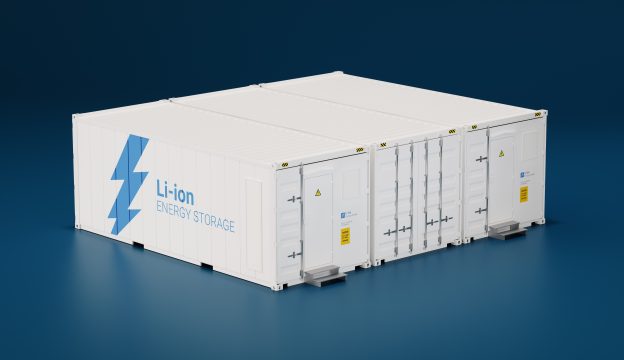 |
The battery market has grown rapidly in scale during the recent period because of the growing demand for consumer electronics and the emergence of new energy storage applications (e.g. electric vehicles and utility-scale energy storage systems). This growth has also been a boon for lithium-ion batteries (LIBs), which continues to be the dominant technology across most energy storage applications. Nevertheless, research institutions and startups have already entered the race to develop the next-generation battery technologies just as LIBs are approaching their technological maturity. Among the new technologies, solid-state (or all-solid-state) batteries and sodium-ion batteries (SIBs) are seen as promising alternatives to LIBs because of their potential advantages and recent technological breakthroughs. Continuing advances made in these two technologies could threaten the market dominance of LIBs in the near future, especially in new applications like electric vehicles.
Conventional LIBs that are now on the market lead other rechargeable battery technologies in energy density and C-rates. However, LIBs also use liquid electrolytes based on volatile solvents. Consequently, they can become unstable and even present a fire risk if they overheat or suffer damages. Due to this shortcoming and other issues, research institutions and startups worldwide have been searching for alternative battery technologies that are safer and offer higher energy density compared with the existing LIBs.
Solid Power Inc. is a US-based company that focuses on solid-state batteries. Its prototype thus features an electrolyte in a dense solid form instead of the traditional liquid form. Solid Power believes its technology, which is based on research conducted at University of Colorado at Boulder, will open up radically new possibilities in the development of mobile devices and electric vehicles.
Solid Power uses a lithium-metal anode and a market-available cathode to save cost. The solid electrolyte – the core component that is being developed in house – is composed of lithium, sulfur, and phosphorus. The latest prototype features an energy density of 300Wh/kg, which is 20% greater than the average energy density of conventional LIBs. Also, the number of reliable charge-discharge cycles that the prototype can reach is now at 200. These advances are very impressive with respect to the overall development of the technology. However, the prototype can only function normally in a very limited temperature range of around 20°C (room temperature) to 150°C. Solid Power aims to make its battery work in an environment that is much below the room temperature. The company also wants to keep increasing the battery’s energy density and lowering its production cost.
Solid Power entered a partnership with the BMW Group in 2017 and has recently completed Series A financing that closed at USD 20 million. Contributors to this round of financing included Sanoh Industrial Co. Ltd., Hyundai Motor Co., Samsung, Solvay SA, and other venture capitalists. The list of the company’s backers indicates that major representatives of the automotive, chemical, and electronics industries are highly enthusiastic about the potential of solid-state batteries.
Solid Power is currently building a battery manufacturing plant in the US state of Colorado. This plant is expected to finish construction by the end of 2018 and begin operation in 2019, with the production capacity eventually ramping up to 10MWh per year. Doug Campbell, CEO of the company, said that the Colorado plant will prove to prospective clients that the company has the right technology and the manufacturing capability.
Technological breakthroughs thrust sodium-ion battery into the spotlight
Besides solid-state batteries, SIBs are also regarded as a strong contender in the competition to become next-generation energy storage technologies. SIBs have the advantage of operating under the same mechanism as LIBs while using a metal that is much cheaper and more abundant than lithium. Several major research institutions have made breakthroughs in recent years as they study the feasibility of SIBs for different applications. These institutions include the Pennsylvania State University (PSU) and the Pacific Northwest National Laboratory (PNNL) in the US and the University of Birmingham in the UK. In particular, PNNL and PSU have developed a solid electrolyte based on sodium, phosphorous, tin and sulfur. The electrolyte is reported to be able to withstand extreme heat, functioning normally even as the temperature goes up to 400°C. This innovation leads to the possibility of building a battery featuring a solid electrolyte containing sodium ions in the future.
Tiamat, a startup under the French National Center for Scientific Research (CNRS), announced in November 2017 that it is working on a rechargeable SIB belonging to the popular 18650 size category (i.e. cylindrical form that is 6.5cm long and 1.8cm in diameter). Tiamat’s ambitious goal is to begin large-scale production of cylindrical SIBs by 2020. At that time, the company is also expected to have developed products that offer longer life, higher C-rates, and better overall performance compared with today’s LIBs.
According to data provided by Bloomberg New Energy Finance (BNEF), the scale of the global battery market is projected to expand from the current 100GWh to more than 1,500GWh in 2030.A major demand driver in the battery market during this period will be the global sales of electric vehicles that have been increasing steadily on an annual basis. Participants in the battery industry could rake in billions in profit if they can significantly improve the existing LIB technology or provide new and better technologies. In sum, there is going be a lot of excitement in battery market going forward.
(The above article is an English translation of a Chinese article written by Daisy Chuang. The credit of the top image goes to Pixabay.)







